Chicago’s – Public Police
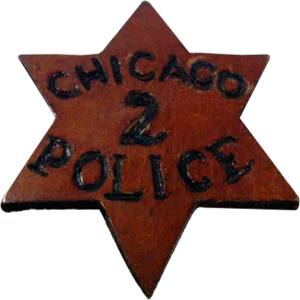
Before Chicago ever became a city, the town of Chicago was authorized by the General Assembly of Illinois to establish its own police force, which was set up a constabulary. Men wore civilian clothes adorned with leather badges. They carried heavy canes by day and batons by night and were provided with “creakers,” a noisemaker device, with which to call for assistance in case of distress. The first “officers” were unpaid citizen volunteers that would patrol the urban city streets looking for drunkards and watching for fires.
After the town was incorporated as a City in 1837, the town Charter authorized the hiring of two constables who were paid through a fee system that was based on the number of warrants served, but citizen’s were largely responsible for protecting their own property. Constables had a variety of non-law enforcement functions that they performed, including lighting and extinguishing street lambs, serving as land surveyors, and verifying the accuracy of weights and measures. If a crime was committed, the citizen would notify the constable who would obtain a warrant from the magistrate or justice of the peace and serve the criminal with a summons to appear before the court to answer the citizens complaint. There was no organized system of crime detection or prevention. A Sheriff, was the officer in charge of the court’s business and responsible for enforcement of criminal laws. But the sheriff, and his deputies, did not patrol or serve as night watchmen.
In 1839, Chicago established a night watch system, and a marshal was appointed to oversee them. Though the general duties of the watchman were straightforward: They preserved order, which was broadly defined, and raised the “hue and cry”1 if they discovered criminal offenses or discovered a fire; and, on occasion, they detained suspicious and disorderly persons, the implementation of those duties often proved unsatisfactory. The whole constabulary watch system was viewed as fragmented, inefficient, incompetent and corrupted. Moreover, the public police lacked the training and ability to prevent disorder, particularly civil unrest and riots, or control crime.2
Pinkerton’s Private Police & Detectives
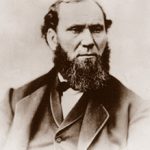
Allan Pinkerton,3 a Chartist,4 who emigrated to the United States in 1842 from Scotland, settled in a Scottish community at Dundee, III, where he worked as a cooper. While working as a cooper in Dundee, Pinkerton came upon a gang of counterfeiters and after several weeks of surveying the group, led to their capture and prosecution. His testimony at the trial led to their conviction, which in turn led to his celebrity as an undercover detective. After several private commissions in detective work, Pinkerton was appointed deputy sheriff of Kane County in 1846; and, in 1847 he returned to Chicago and joined the police department. In 1849,Pinkerton became the first detective appointed to the Chicago Police Department. In 1850. Pinkerton left public service and soon afterward he and a partner, Edward Rucker, a Chicago attorney, formed the North West Police Agency.
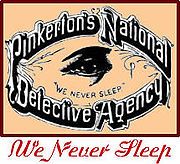
A year later, after his partner, Edward Rucker, left to take a new position as Judge, Pinkerton renamed the firm Pinkerton National Detective Agency and adopted the then famous–now infamous, ever seeing eye logo, and motto “We Never Sleep.”5
From the very start, Pinkerton had instituted, a code of conduct, and by 1853–five years before the Chicago police, a uniformed dress code for his agents. Pinkerton’s strict code of conduct which guided all his agents and his business undertakings, was straightforward, as follows:
- Accept no bribes
- Never compromise with criminals
- Partner with local law enforcement agencies
- Refuse divorce cases or cases that initiate scandals
- Turn down reward money
- Never raise fees without the client’s pre-knowledge
- Keep clients apprised on an on-going basis
As illustrated in the Timeline above, Pinkerton and indeed other private police such as the Columbian Guards established, to their credit, a number of “firsts,” both aesthetically, e.g., adoption of uniforms and badges; and, operationally, e.g., strict code of ethics and rules, and particularly the hiring of women as undercover operatives6 and African Americans, that influenced the organization of Chicago’s public police force.
Albeit, Chicago was slow to adopt some of Pinkerton’s trends, i.e., the City did not appoint its first African American police officer until 1872, however, black police were assigned to duty in plain clothes only and worked mainly in largely black neighborhoods. Nor did it hire women until 1885, not as police officers, but as matrons to facilitate the handling of women prisoners. After the advent of automobiles in the early 1900’s, women matrons were also assigned as meter maids. It wasn’t until 1913, that Chicago appointed its first woman police officer.7
By the late-mid-Nineteenth Century, as a result of undercover work for the U.S. Post Office, the Chicago and Northwestern Railroad, and the Illinois Central Railroad, Pinkerton had developed a national reputation as an effective detective and his agency as a respectable private police force, through which he developed many valuable friendships.8
Pinkerton recognized early on that weakness in the public police had placed private police in a profitable and powerful position and he capitalized on that weakness and used it to supplement and advise the public police.9
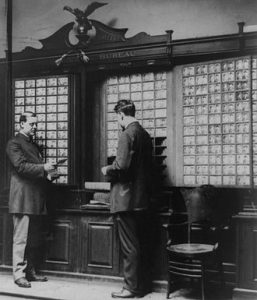
Pinkerton revolutionized law enforcement with his so-called “Rogues’ Gallery,” a collection of mug shots and case histories that the agency used to research and keep track of wanted men. Along with noting suspects’ distinguishing marks and scars, Pinkerton also collected newspaper clippings and generated rap sheets detailing previous arrests, known associates and areas of expertise. It wasn’t until 1887, that the Bertillon System of Identification10 was introduced in the U.S. in 1887 by R.W. McClaughry, Warden of the Illinois State Penitentiary at Joliet.11
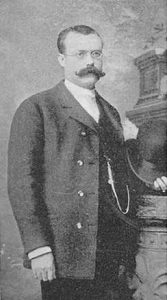
Pinkerton’s network of informants and methods of infiltration of labor forces is legendary. One of the more notorious cases involved infiltration from 1873 to 1876 of one of his detectives, James McParland, lived among the Molly Maguires12 in Pennsylvania’s coal mining town, known today as Jim Thorpe, and secured evidence that led to the breaking up and arrest of the coal miners allegedly engaged in terrorism.13 In 1858, Pinkerton’s first year offering night protective services to merchants, its “small body of uniformed night watchmen reported 751 incidents at banks stores and offices of open or insecurely fastened doors and 440 cases of improper employee conduct was discovered.14
The effectiveness of Pinkerton’s private force is undeniable. Pinkerton’s harsh policy toward labour unions caused it to be severely criticized in labour circles, but from Pinkerton’s point of view, he thought he was helping workers by opposing labour unions. Nevertheless, Pinkerton’s sinister reputation as the paramilitary wing of big business and industrialists, who used them to spy on unions or act as guards and strikebreakers, led to a number of clashes with workers on several occasions.
During the wild west era of frontier expansion (1865-1895), railroads and express companies often employed the Pinkerton agents as security guards and bounty hunters. The Pinkerton’s famously infiltrated the Reno gang—perpetrators of the nation’s first train robbery—and later chased after Butch Cassidy and the Sundance Kid, the James Brothers, the Dalton Brothers, among others. The Pinkertons usually got their man, but in the 1870s, they spent months engaged in a fruitless hunt for the bank robbers Jesse and Frank James. One of their agents was murdered while trying to infiltrate the brothers’ Missouri-based gang, and two more died in a shootout. The hunt came to a bloody end in 1875, when the Pinkertons launched a raid on the James brothers’ mother’s house in Clay County, Missouri, but Frank and Jesse were nowhere to be found. During the standoff, a member of the detectives’ posse tossed an incendiary device through the mother’s house window, blowing part of her arm off and killing the James brothers’ 8-year-old half brother. The botched raid turned public opinion against the Pinkertons. After seeing his detectives denounced as murderers in U.S. papers, Allan Pinkerton reluctantly called off his hunt for the James gang. Jesse would go on to elude the authorities for another seven years before being killed by an assassin’s bullet in 1882.15

During an 1892 strike by the Amalgamated Association of Iron and Steel Workers, the Carnegie Steel Company paid some 300 Pinkertons to act as security at its mill in Homestead, Pennsylvania. After arriving at the plant on river barges, the agents squared off with thousands of striking workers in an all-day battle waged with guns, bricks and even dynamite. By the time, the outnumbered Pinkertons finally surrendered, at least a dozen people were dead and several more wounded.16 The fallout from the melee crippled the steel union, but also branded the Pinkertons as “hired thugs.” U.S. Citizens pressured Congress to investigate the use and hiring of private militia to quell labor strikes. Congressional hearings eventually led to the passage of the Federal Anti-Pinkerton Act, which prohibited the hiring of Pinkerton type “private militia” by the U.S. Government, and prompting several states to pass laws banning the use of outside guards in labor disputes.17.

By the mid-1890s, many people saw all private detectives as evil, but others, because of inadequate public policing, saw them as necessary. For Pinkerton, Homestead was a critical event. Precedents had been set, and to Pinkerton’s management, the probability of future congressional investigations, and more government regulations over private police agency’s in general, were the reality that set Pinkerton’s future official policy.
Over the next several decades after Homestead, Pinkerton changed its operating model. It minimized its strike services and directed its resources and energies toward the professional criminal class, particularly jewelry thieves. In simple terms, Pinkerton’s goal was “to do for the jewelers what it had done for the railroads in the 1870s and 1890s.”18 To purposely provide specialized detectives services to members of the Jewelers Alliance who were menaced by robbers. “The alliance was a revolutionary concept.”19
While Pinkerton’s reputation took a dive during the mid-1890s and its popularity was waning, the Chicago Police Department’s star was rising. In 1894, the Chicago Police Department made changes in the uniform worn by officers, by which the various ranks were more easily distinguishable, and in 1895 the General Assembly passed the Civil Service Law, raising the standards for selection of personnel, and established training schools and manuals for officers. By the turn of the Century, the days of constables were far removed and law enforcement was a legitimate full time profession.

Yet, private police did not fade into the background or disappear. Nor did Pinkerton’s, which morphed into private protection and security businesses. In fact, it organized a new protective services branch dedicated to the protection of members of jewelers security alliance, and soon thereafter, successfully extended protective services to the American Bankers Association, and other such alliances. As detectives for the jewelers and bankers alliances, Pinkerton sent quarterly bulletins, warning circulars, and albums of photographs depicting how to safeguard their businesses and eradicate lax procedures. It also provided protected establishments with small metal signs that declared they were protected by Pinkerton’s-novel for its time, but seemingly seen everywhere today. Naturally, by virtue of being the official protection specialists for the bankers and jewelers alliances, these alliances would automatically turn to Pinkerton’s with other problems.20 Indeed, Pinkerton’s was extremely successful. It was a giant in the security industry, guarding everything from the Olympics to the Oscars. In 1999, Pinkerton’s was acquired by Sweden’s Securitas, A.B., for $384 million, which operates the company as a wholly owned subsidiary, under the name “Pinkerton.”
Footnotes
- The hue and cry is a process by which bystanders are summoned to assist in the apprehension of a criminal. Under English common law the cry had to be raised by the inhabitants of a hundred [a town] in which a robbery had been committed if they were not to become liable for the damages suffered by the victim.
- Eric H. Monkkonen, Police in Urban America 1860-1920, (InterDisciplinary Perspectives on Modern History) Department of History, University of California, (Cambridge University Press, 1981).
- Allan Pinkerton was born in Glasgow on Aug. 25, 1819, the son of a police sergeant who was later wounded during the Chartist riots. He died in Chicago in 1878.
- According to the British Library Learning Center website: “In 1838, the London Working Men’s Society published The People’s Charter, which demanded six key changes to the British electoral system, including universal male suffrage. These demands formed a central doctrine for radicals wishing to reform the political system. Support for the Charter spread rapidly and its advocates became known as the Chartists. The most infamous event in the history of Chartism was the Newport Rising, which took place in Newport in Wales on 4 November 1839. Thousands of Chartists from South Wales marched on Newport and grouped outside the Westgate Hotel, but when they tried to enter, soldiers were lying in wait and fired shots, killing 22 marchers and wounding many more. The remaining Chartists then retreated. The leading Chartists present were sentenced to be hung, drawn and quartered, but after protests from all over the country, the sentence was reduced to transportation.” http://www.bl.uk/learning/timeline/item106693.html.
- Frank Morn, “The Eye That Never Sleeps,” A History of the Pinkerton National Detective Agency, Indiana University Press (1937, Bloomington, IL).
- E.g., in 1856, Pinkerton hired the first female detective in U.S. History, Kate Warne. (very little is known about Kate Warne prior to her working for Allan Pinkerton, except that she was born in Erin, Chemung County, New York and was a widow by age 23.) Pinkerton, in his book The Spy of the Rebellion (1883), described her as: “a slender, brown-haired woman, graceful in her movements and self-possessed. Her features, although not what could be called handsome, were decidedly of an intellectual cast… her face was honest, which would cause one in distress instinctly [sic] to select her as a confidante.” Pinkerton, Allan, The Spy of the Rebellion Being a True History of the Spy System of the U.S. Army during the late Rebellion, Compiled from Official Reports by Allan Pinkerton under the nom-de-plume of Maj. E.J. Allen, Chief of the U.S. Secret Service (G.W. Dillingham, 1883); see also https://en.wikipedia.org/wiki/Kate_Warne.
- See Illinois Historical Survey, The Chicago Police Department, “Facts” and Historical Data, by Richard J. Daley, Mayor and Timothy J. O’Conner, Commissioner of Police, published by the Chicago Police Department (Chicago, 1955). Available at URL: https://archive.org/stream/factshistoricald00chic/factshistoricald00chic_djvu.txt.
- E.g., Pinkerton established a close relationship with Illinois Central Railroad president, George McClellan, who was later appointed a Major General of the Union Army by Abraham Lincoln. McClellan was responsible for Pinkerton’s appointment as head of security for Abraham Lincoln during the Civil War, and Pinkerton through his network of spies, is credited with thwarting an early assignation attempt on Lincoln. See Pinkerton, Allan, The Spy of the Rebellion Being a True History of the Spy System of the U.S. Army during the late Rebellion, Compiled from Official Reports by Allan Pinkerton under the nom-de-plume of Maj. E.J. Allen, Chief of the U.S. Secret Service (G.W. Dillingham, 1883).
- E.g., in 1858, newly elected mayor, John C. Haines granted Pinkerton’s watchmen patrol the power to arrest. “In that year, 53 persons were seized by Pinkerton patrolmen for a variety of crimes ranging from disorderly conduct to larceny.” In fact, the mayor relied on Pinkerton to supplement the police force, and he paid the agency $700 in 1858 to watch for pickpockets on public occasions. See Frank Moran, “The Eye that Never Sleeps,” at 30. Allan Pinkerton’s two sons, Robert and William Pinkerton, were appointed honorary members of the Association of Chiefs of Police after its formation in 1893. “They were the only private detectives so honored for the next ten years.” Id. at p. 124-25.
- Alphonse Bertillon was a French criminologist who first developed this anthropometric system of physical measurements of body parts, especially components of the head and face, to produce a detailed description of an individual. This system, invented in 1879, became known as the Bertillon system, or bertillonage, and quickly gained wide acceptance as a reliable, scientific method of criminal investigation. It was eventually displaced by fingerprint analysis, although Bertillon measurements were commonly used in conjunction with fingerprinting well into the 20th century.
- McClaughry translated Bertillon’s 1885 edition of Signaletic Instructions Including the Theory and Practice of Anthropometrical Identification from French to English, and its use in the States became quickly and widely accepted.
- The Molly Maguires were a secret organization of coal miners supposedly responsible for acts of terrorism in the coalfields of Pennsylvania and West Virginia, during the period from 1862 to 1876. See https://www.britannica.com/topic/Molly-Maguiresin.
- McParland’s testimony during the trials (1875-1877) resulted in the conviction and hanging of 10 mine workers for murder. The court convictions and adverse publicity during the trial is credited with a subsequent decline of violence in the coalfields. See Allan Pinkerton, The Molly Maguires, (1877).
- Frank Morn, “The Eye that Never Sleeps” at 30.
- See Morn, “The Eye that Never Sleeps”; and https://www.history.com/this-day-in-history/pinkertons-maim-frank-and-jesse-james-mother.
- See Pinkerton, Allan, Strikers, Communists, Tramps and Detectives, (Spaulding & Co., New York 1878).
- Senate Report on Investigation of the employment of Pinkerton Detectives in Connection with the labor troubles at Homestead, PA, 52nd U.S. Congress, 2d Sess., 1893, Senate Report No. 1200, p. 12 and 51. See also 5 U.S.C. § 3108: “An individual employed by the Pinkerton Detective Agency, or similar organization, may not be employed by the Government of the United States or the government of the District of Columbia.” (Pub. L. 89– 554, Sept. 6, 1966, 80 Stat. 416.)
- Morn, “The Eye that Never Sleeps” at 115.
- Id.
- Morn, “The Eye that Never Sleeps” at 119.